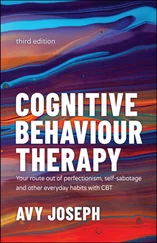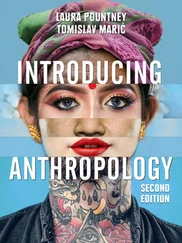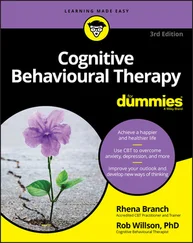We were both keen to expound clearly the importance of the socio‐cultural and political dimensions of mental health, which is implicit in the model and its applications, notwithstanding Tony’s, and my own, frustration and sadness at many socio‐political developments in the world at large. As therapists we can all too often only bear witness to these and it can feel very hard to influence them helpfully. However, we both felt that a model such as CAT can and should helpfully offer humane and compassionate, while scientifically valid, understandings of mental health and well‐being much more broadly. We have been very clear, therefore, and unapologetic about a need to locate the model in a broader context, both scientifically and clinically but also socio‐politically. We also felt it important to attempt to locate CAT broadly within the extensive field of “brand name” therapies, the distinctions between which, as discussed, are frequently spurious and appear to relate sadly more to professional narcissism, parochialism, and campanilismo . These considerations and views will be evident yet again in this edition, as they were in the first. Hence the book is, and aims to be, more than simply a summary of key features of CAT as a model of therapy and of its applications.
Having said this, Chapter 9in this edition, which aims to overview clinical uses and applications of CAT, is considerably expanded given a considerable increase in these, and also given the continuing and often quite acrimonious debate with regard to classification and nosology in the field of mental health. Challenging currently dominant but flawed paradigms (notably those of a largely more individualistic biomedical and/or cognitivist persuasion) and reconceptualizing disorders and how we might help treat them is an important part of what any good and evolving model should offer. However, it is still avowedly not an explicitly “how to” kind of chapter giving detailed descriptions of treatments by various specialist authors. Such a volume or volumes are undoubtedly needed but this was certainly beyond the remit or feasibility of a one‐ or two‐author volume.
But even in the writing of this more summary book we have depended greatly on the work and input of others. Tony would have been the first to acknowledge and celebrate the fact that we all stand “on the shoulders of giants” and of many others, and depend on their very various contributions. In a very real, and dialogical, sense there is no such thing as completely original or independent work. Many others who are cited in the text have contributed to the model, its underpinning theory, and its range of applications over the years. By way of example the articulation and presentation of the very first specifically CAT volume was apparently greatly aided and abetted by Professor Glenys Parry, who has continued to be an active champion of the model in different ways over the years since then.
At a personal level it has been an honor and privilege to undertake the final work of this revision, although this has also felt to be, perhaps unsurprisingly, a challenging and quite arduous undertaking. In many ways it has felt a weighty responsibility to re‐state and update what was essentially Tony's life’s work, although the development of the model was assisted increasingly by various others who are cited in the text. It has also inevitably felt a rather poignant and solitary undertaking at times, despite helpful discussion with various current colleagues, in the absence of Tony’s “larger than life,” innovative, critical, and at times impatient presence and input. It would have been good at various moments to have been able to “chew things over” with him as I and many others would have done in the past.
This revised edition has unfortunately been delayed by the inevitable distractions and intrusions of life, both personal and professional. This has included, sadly, a protracted but morally unavoidable involvement in campaigning in support of “whistle blowers” in the face of some serious incompetence, victimization, and cronyism within and around the NHS in the UK. But I have also been guilty of some procrastination, a tendency to unhelpful over‐inclusiveness, and aspiring to imagined perfect outcomes; all of this Tony with his talents was much better able to transcend, to “see the wood for trees” quickly, and to express his views articulately—if sometimes very forthrightly!
As regards terminology, we have in this revision on the whole, as noted in the previous edition, referred to “patients” rather than “clients,” although we use the term interchangeably. We recognise an increasing tendency and preference among many colleagues, especially non‐clinical, to use the word “client” possibly given some of the arguably paternalistic and disempowering associations of the word “patient.” Possibly in part due to our own medical trainings and background we continue to take a view that the word patient has also an honorable history and associations implying notably a vocational and not essentially commercial responsibility to those who are in distress and are suffering. Indeed, the roots of the word lie in the Latin verb patior (I suffer). In our experience, too, people seeking help from clinicians and other health professionals are not always comfortable with the word client. However, times change and with them connotations and usages of terminology, including of diagnostic “labels” (see Chapter 9), and we recognize it is inevitably hard to know where consensus will lead.
We have also in this edition deliberately drawn back from use of the term “intervention” which we felt has become increasingly and excessively used as a synonym for “treatment” or “therapy.” While the word may make some sense as a high‐level, collective descriptive of treatment approaches, it still to our mind carries unfortunate mechanistic and militaristic echoes at best applicable in health care in, for example a “doing to” public health context, but not we suggest as a description of any collaborative, humane, relationally based treatment, far less psychotherapy. Unfortunately, in an era of increasing “commodification” of health care and of staff it also carries for us a quasi‐commercial and mechanical resonance invoked by phrases such as “delivering interventions” which we felt sat uneasily with our therapeutic position and aims. Again, however, we recognize that word usage changes and it may be our views are effectively already superceded and redundant, and that the word already means something different, perhaps regrettably, to a present generation of health care professionals.
We both sincerely hoped that this reworked and revised edition would be welcome and helpful to a range of people, both fellow mental health professionals and others, and I hope, despite its delayed and rather complicated coming into being, that this will prove to be the case. I very much hope that it may also contribute in some way to a more meaningfully relational and compassionate moving forward for us all much more broadly. This was, I am sure, another deeply felt aspiration and hope on Tony’s part.
Ian B. Kerr—Whangarei, New Zealand–Aotearoa (2020)
Preface to the Second Edition
This book offers an updated introduction and overview of the principles and practice of cognitive analytic therapy (CAT). The last such book appeared over 10 years ago and was the first systematic articulation of a new, integrative model which had been developed over a period of many years. Although there have been two specialist volumes since then (Ryle, 1995, 1997a) it is significant that a restatement of the model and its applications is now necessary. There are many reasons for this. They include the fact that as a young, genuinely integrative model (as acknowledged in the influential Roth and Fonagy report (1996)), it is still evolving and developing both in terms of its theoretical base and its range of applications. In this book, a further exposition of the CAT model of development is given, stressing in particular an understanding of the social formation of the self based on Vygotskian activity theory and Bakhtinian “dialogism.” We also outline an ever‐expanding range of practical applications of CAT as an individual therapy as well as its application as a conceptual model for understanding different disorders and informing approaches to their management by staff teams. This trend has been described (Steve Potter) as “using” CAT, as opposed to “doing” it. Newer or preliminary applications of CAT reviewed here include CAT in old age, with learning disabilities, in anxiety‐related disorders, in psychotic disorders, CAT for self‐harming patients presenting briefly to casualty departments, CAT with the “difficult” patient in organizational settings, and CAT in primary care. In part these also reflect theoretical developments of the model which are also reviewed. Its gradually expanding evidence base is also reviewed, along with some of the difficulties, both scientific and political, inherent in research in this area.
Читать дальше












